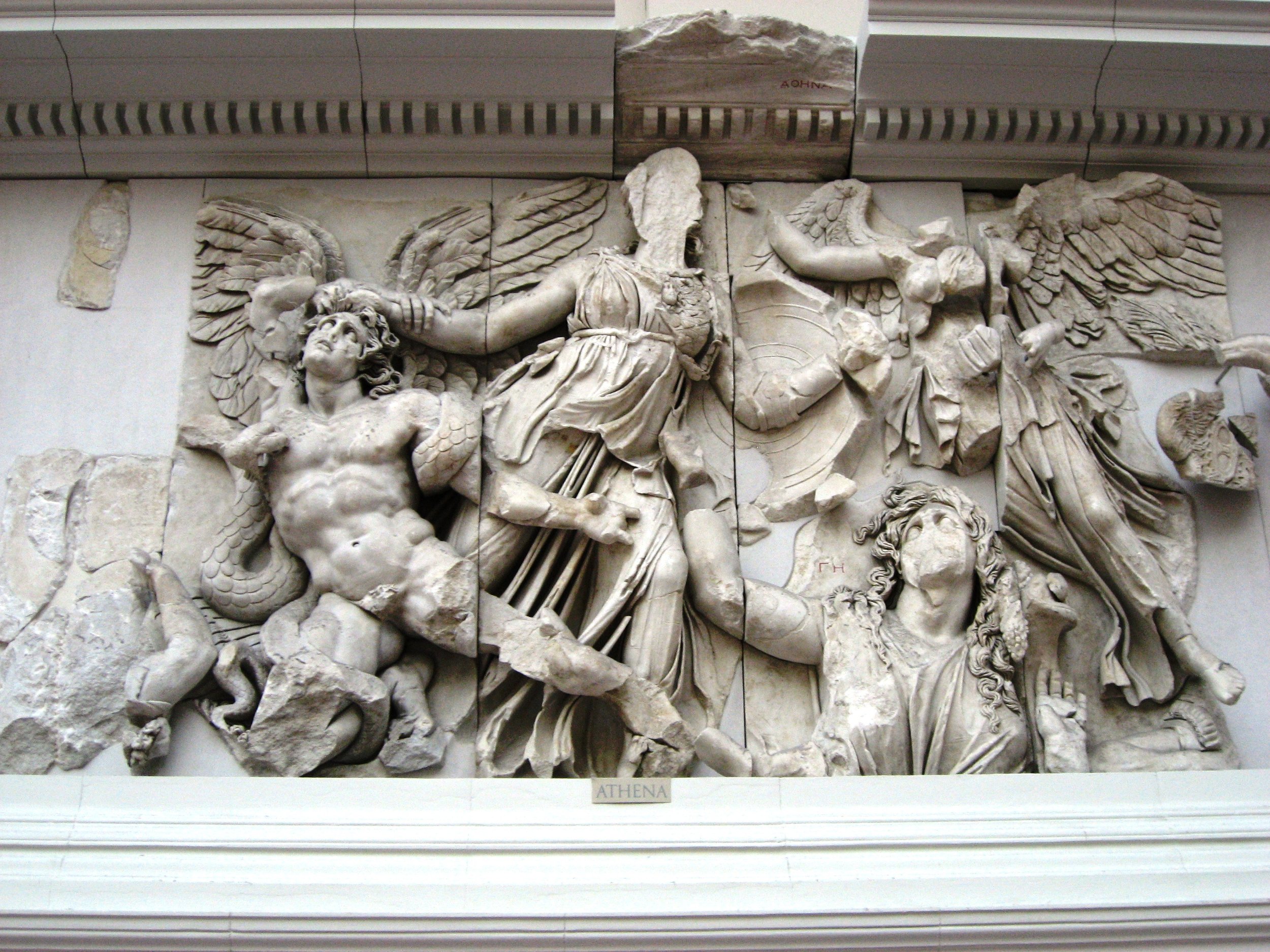Episode 22: Giants in Greek Myth
The word “giant” comes from a Greek word, Gigas, meaning “Earthborn.” In this episode, our student Jake Compagna reprises the theme of his senior thesis on giants and other large creatures, giving us insight into the origin of the word—born of Gaia, or the Earth—and the ways that these monstrous creatures were depicted in myth and on the famous Altar of Pergamon. Defeated by the Olympian gods, with a little help from the most important Greek hero, Heracles, the Giants were one of the last challenges to the supremacy of Zeus and his fellow Olympians. These creatures represent the pre-Greek period, full of wildness, strange beings, and a distinct lack of civilization, which the Olympians (and Greeks!) represent. Greeks in Athens and later in Pergamon used the Olympians’ defeat of the Giants as representing their own triumph over foreigners, the Persians and Celtic Galatians respectively.
At the center of Jake’s episode is the famous Altar of Pergamon, built by king Eumenes II in the middle of the 2nd c. BCE. It was marvelously (um) gigantic in size but also lavishly decorated with friezes (carvings in relief), the most conspicuous of which was the depiction of the Olympians gods soundly defeating the animalistic Earthborn Giants. Here are a few shots of this great sculptural program, the first of which is the central panel showing Gaia (here written “Ge”) herself rising from the ground to watch her children losing their battle.
Gaia arises from the ground to watch Athena, goddess of war, manhandle a Giant, marked by serpentine legs. The goddess Nike (Victory) is present, emphasizing the Olympians’ victory over their primeval foes (Images from Wikipedia).
Another image (a favorite of yours truly) shows Hecate pummeling one of the Giants on the left, while Artemis (who is often associated with Hecate, as well as Selene) has already subdued another. Why my favorite? Note that two dogs, associated with Artemis/Hecate, have their jaws firmly around two poor, poor Giants!
Go, pooches, go.
Finally, the three Moirai (Fates) get into the action, pummeling their foes into submission. The Fates were sometimes said to be born of Night, but frequently they are Zeus’ children, showing a close relationship between the king of the gods and the destined fate of the world—note a Greek world.
The panel on the left is heavily reconstructed, but the poor Giants did not stand a chance against the fated domination of the Olympian gods.
Now, a picture of the Altar of Pergamon as reconstructed in Berlin. You can see the magnificence and massiveness of the monument. Whatever the meaning of the friezes, the altar was meant to make a statement.
The wide view of the whole. In its original state, it must have been a marvelous sight to visitors—one that promoted the power of the city of Pergamon and its kings.
Credits:
Written and Directed: Jake Compagna
Narrated: R. Scott Smith
Voice Actors: A.J. O’Neil and Juila Sommer
Sound Engineer: Samantha Coetzee
Music: Brooklyn Tea by Jared Sims




